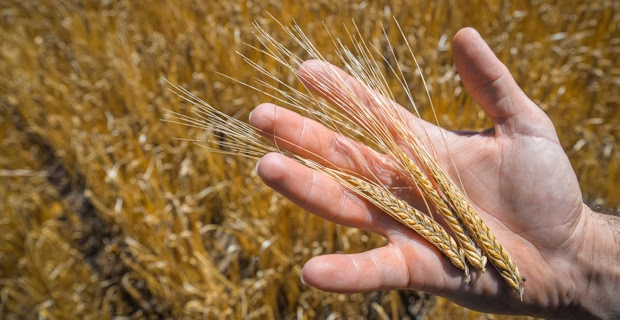If you've followed the global agricultural newsflow this past year, or maybe you just glanced at 'Ag-Twitter' every now and then, one of the main topics you would have read about is the persisting dry conditions through parts of North America - from the La Niña weather pattern causing another year of exceptional drought in Western USA to Canadian growers having a drought that decimated yields and drastically reduced Canada's export capacity for commodities such as canola.
We know rainfall will bring an end to every drought eventually, and hopefully sooner rather than later for everyone involved, some effects of the drought can last much longer than the actual drought itself. While financial impact, seed availability and getting furloughed workers to return might be top of mind for many growers, residual herbicides should not be forgotten either. Residual herbicides rely on moisture and microbial activity to break down, so one of the consequences of a much drier than average growing season is that the herbicides applied can still be active in the following season.

I recently spoke to Kindersley, SK-based Agronomy Manager Jeremy German with G-Mac's AgTeam, who told me that residual herbicides are one of the main concerns for his agronomy team moving into 2022: “The way we grow crops in Saskatchewan is based on specific rotation, which in most cases includes canola, wheat, lentils and other crops. As our rainfall tends to be reasonably reliable, we are able to use residual herbicides knowing that moisture and microbial activity will have them broken down before the next crop. Now, coming off of such a dry 2021, I'm not sure whether this will be the case everywhere.”
For G-Mac's AgTeam, however, the decision to create digital field records through Agworld (which they implemented into their organisation late 2019) now helps them work through potential issues and find the most optimal solution. According to Jeremy, “When you start to run into potential plant-back issues, having accurate digital records that you can access at a moment's notice and query however you need to, is key. With Agworld, it's easy for us to optimise a grower's seasonal plan in such a way that allows them to still spread their risk over multiple crops, avoids residual herbicide concerns, and prevents rotational jams. So many factors such as financial options, seed availability, contractual agreements, fertiliser prices and herbicide availability all play a role, and so no change to a rotational planning is ever straightforward.”

Got what it takes to join the Agworld team? We’re looking for talented individuals to help us deliver innovative solutions in agriculture.
Jeremy continued: “Our agronomists provide consultancy services to over 25 growers on average, and so paperwork will get really messy when changes based on multiple variables are applied to clients' planning at scale. Having digitised farm records available in Agworld and being able to simply adjust next season's planning with a couple of keystrokes certainly helps our team lessen the administrative burden and maximises the outcomes for our grower clients. When we decided to adopt Agworld we could have never foreseen some of the best use cases for us in using Agworld, but the 2022 crop planning is certainly a great use case for us!”





